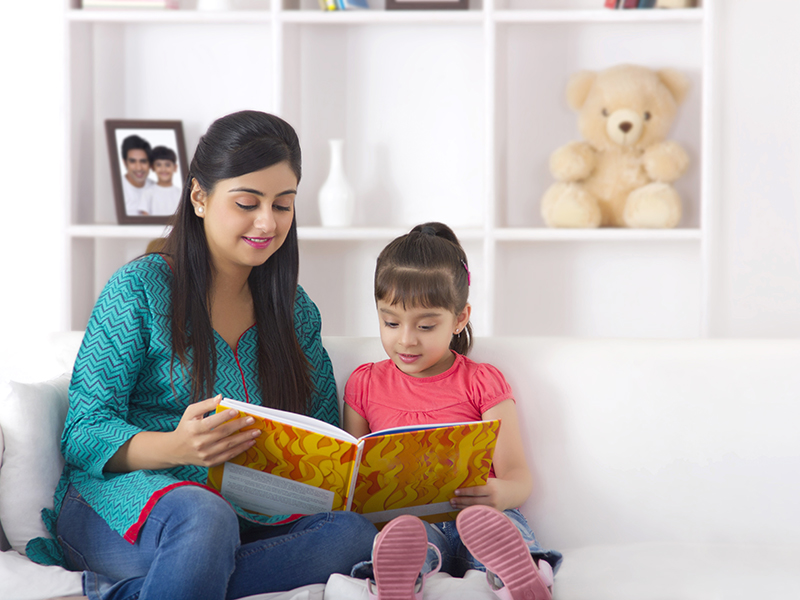No products in the cart.
Numerous benefits of storytelling
By -Dr. Chiranth R, assistant professor of paediatrics and neonatology, CDSIMER, Dayanand Sagar University, Bengaluru
The ancient art of storytelling is a powerful method to nurture language development in children, going beyond mere entertainment, captivating their imagination, enriching vocabulary, and fostering a love of reading and learning
Early childhood is a critically important physical and cognitive development phase for youngest children. While the capability to observe and respond is developed early, children’s speech development evolves gradually. At this stage in children’s lives, parents have to discharge an important duty to guide and support them to acquire language skills through creative, stimulating activities. An especially impactful way of enabling children’s language and speech skills is through storytelling.
The ancient art of storytelling is a powerful pedagogy to nurture language development in children. It goes beyond mere entertainment, captivating their imagination, enriching vocabulary, and fostering a love of reading and learning.
Storytelling is very effective for the unique ability of stories to engage children. A well-crafted story goes way beyond words; it paints vivid pictures, stimulating children’s imagination, and prompting development of cognitive skills such as attention, memory, and reasoning — all essential for language learning.
Moreover, storytelling introduces new vocabulary within meaningful context, making it easier for children to comprehend and retain new words. Unlike traditional pedagogies, which tend to be disconnected from everyday life, storytelling immerses children in memorable experiences. It introduces them to sentence structure, language rhythms, and formation of questions, while simultaneously enhancing their listening and comprehension, laying the foundation of effective communication skills.
Interactive storytelling takes these benefits up another notch by involving children in the process. When children ask questions, predict outcomes, and contribute their ideas to story-crafting, they learn critical thinking and articulation.
Beyond language development, storytelling strengthens emotional bonds between parents and children. It stimulates intimacy and trust, creating positive, joyful experiences that enhance children’s readiness to learn.
Customising storytelling techniques for children of different age groups is crucial to maximise impact:
Infants (0-1 year). Try soft, melodic storytelling with expressive facial gestures. Infants are naturally drawn to the human voice, and early exposure to language lays the foundation for future learning. Toddlers (1-3 years). Use simple, repetitive phrases and encourage participation. Toddlers thrive on repetition as it helps them anticipate what’s coming next, keeping them engaged and promoting language development.
Toddlers (1-3 years). Use simple, repetitive phrases and encourage participation. Toddlers thrive on repetition as it helps them anticipate what’s coming next, keeping them engaged and promoting language development.
Preschoolers (3-5 years). Use lively character voices, vivid imagery, and props to bring stories to life. Preschoolers’ active imaginations allow them to follow complex narratives, enhancing their vocabulary and understanding of story structure.
Early school-age children (5-8 years). This is the stage to questions and introduce moral values and character-building into storytelling. In this age group, children can engage in abstract thinking and start connect stories with their experiences, developing critical thinking and empathy.
Older children (above 8 years). Encourage shared storytelling where children contribute to shaping the narrative. This not only enhances creativity but also helps children understand story structure while practicing expressive language skills.
Encouraging children to becoming storytellers themselves is another empowering way to support language development. Start with shared storytelling where you begin the story and children add to it. Use prompts such as pictures or objects to inspire them. Ask them to recount their day in story form — this helps them organize their ideas and express themselves clearly.
Creative activities
- A creative exercise with unlimited possibilities is the ‘story bag’. Fill a bag with well-known characters and encourage your child to create a story around the name she pulls out. This will spur her to think inventively and fit different elements into a cohesive narrative. Ask open-ended questions: “What happens next? or “How does the character solve the problem?” to prompt further exploration of ideas. Praise creativity to boost confidence and enthusiasm for storytelling.
- Introduce children to books of different genres and styles. This broadens their understanding of creative writing and introduces them to new vocabulary and story structures. Storytelling games, such as using story dice or collaborative writing apps, offer structured options to encourage creative thinking.
- Model storytelling by sharing your own stories, whether from real-life experiences or imaginative. Demonstrating the joy of storytelling inspires children to create their own stories. Encourage them to visualize their story before telling it — this makes the narrative more vivid and engaging.
- Novels play a key role in supporting storytelling. Read stories aloud to children. Thereafter, discuss the story to encourage deeper engagement and critical thinking. Inspire children to create new stories based on book themes or characters.
- At the dining table, encourage children to narrate their day or conversations with friends. Children are quick learners, and this daily ritual can be done in more than one language, enhancing their communication skills.
Through storytelling, children develop language skills, creativity, critical thinking, and inter-personal skills. It is invaluable for children’s development and gateway to lifelong learning.

















Add comment